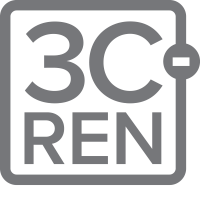
Passive House is the most cost-effective and reliable method to achieve Zero Energy. The standard has been successfully delivered in every climate zone. Using Passive House building science ensures we squeeze out as much efficiency as possible before relying on renewable energy to deliver Net Zero performance. Many California developers are aware that Passive House protocols deliver superior energy efficiency, IAQ, and resilience but, our milder climate, particularly along the coast, requires sophisticated analysis of key metrics to make informed choices.
Using live tools and holding a new pre-certified Passive House building constant, we will demonstrate the impacts that changing climate assumptions have on predicted energy performance. We will walk through the five key principals of Passive House the impacts to these building attributes from the changes to climate zone. At all times, we will demonstrate these impacts on whole-building performance key metrics defined by Passive House.
Because the Passive House standard yield broad-reaching benefits beyond energy and carbon, we will demonstrate the building science behind benefits like indoor air quality, thermal comfort, acoustical benefits, outdoor air quality, weather events, power outages, etc.
As project teams have gained experience with Passive House, we will share learnings on the tools teams are using to reduce the risks of investing in sustainability and increase the likelihood of the realization of performance. Attendees will walk away understanding the following tools:
Once the benefits and design challenges of Passive House are thoroughly debated using tools and evidence, we will turn our attention to the cost consequences of Passive House. We will use the Auros database of project data to compare project costs of traditional/code-based construction versus Passive House buildings. We will also share available cost mitigations in the forms of CEDA, Inflation Reduction Act tax credits and other programs available in California.
The live session will demonstrate how Passive House targets can be met in the San Francisco, Los Angeles, San Diego, and Sacramento Climate Zones.
1 AIA LU|HSW pending for this course

